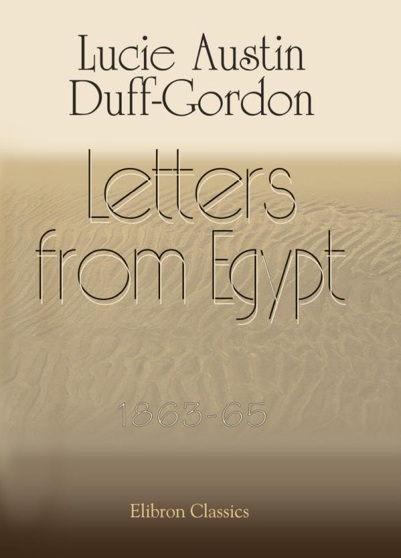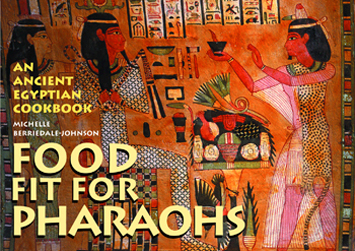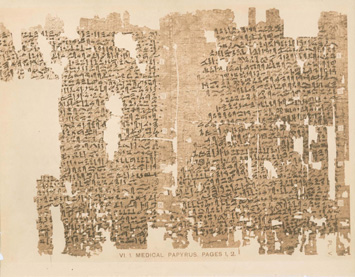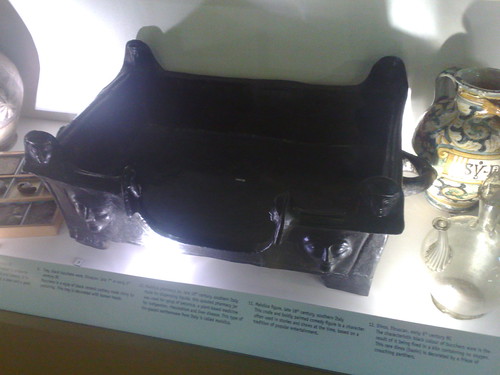Letters from Egypt, 1863-1865 by Lucie Duff Gordon In 1862 Lucie Duff Gordon, the cousin of Harriet Martineau and a friend of Caroline Norton, Meredith and Thackeray, headed to Egypt on a solo trip designed to rid herself of consumption. She spent the next seven years in a ruined house above a temple in Luxor. She integrated quickly, setting up a hospital and welcoming the people of Luxor into her house. Her story is told through her letters. This Elibron Classics book is a facsimile reprint of a 1865 edition by Macmillan. Adamant Media Corporation (6 Dec 2001) 386 pages
-
-
Tutankhamun’s Footwear Studies of Ancient Egyptian Footwear by André J.Veldmeijer, Alan J. Clapham, Erno Endenburg, Aude Gräzer, Fredrik Hagen, James A. Harrell, Mikko H. Kriek, Paul T. Nicholson, Jack M. Ogden, Gillian Vogelsang-Eastwood The discovery of Tutankhamun’s tomb by Howard Carter in 1922 is one of the most significant archaeological discoveries of all time. It took Carter and his team 10 years to clear the contents of the tomb and among the objects found was a large collection of shoes and sandals. The footwear is analysed here in detail for the first time since the discovery using Carter’s records and…
-
Food Fit for Pharaohs An Ancient Egyptian Cookbook by Michelle Berriedale-Johnson The great River Nile was the source of life for the ancient Egyptians, annually flooding its banks to leave behind some of the most fertile soil on Earth. The favourite dishes of the Egyptian people are some of the oldest and simplest, based on wholesome ingredients such as honey, dates, raisins, nuts, beans, whole wheat grains, cumin, garlic, mint and lemon. This charming small book introduces these dishes. It is beautifully illustrated with full-colour images of food and feasting drawn from original paintings on walls and papyrus. It is…
-
The Edwin Smith Papyrus was this year touted as “the birth of analytical thinking in Medicine and Otolaryngology,” in the medical journal The Laryngoscope. Along with a collection of other fascinating papyri, the script gives an incredible insight into the knowledge, skills, and procedures of ancient Egyptian medicine, and offers some tips on how to treat trauma issues, such as a man with a massive gouge in his head. Much of what we know about Egyptian medicine comes from roughly a dozen medical scrolls that have survived. The oldest one is the Kahun Scroll, dating to 1820 BC, which focuses in Gynaecology. The two…
-
Key Dates 330 BC This wooden cult statue of Osiris dates from the Ptolemaic period, around 332-330 BC. One of the most interesting aspects of this life size statue of the god Osiris is that it was quite likely used as a cult statue for worship. It is in wood, finished with plaster or gesso, and was painted; originally, the body of the god was wrapped in linen bands exactly like an Egyptian mummy, so that the statue showed the entombed Osiris as god of the dead or of the afterlife. The eyes are inlaid with glass and stone, giving…
-
Key Dates 650 BC Created during the Late Period of ancient Egypt (c 700-600 BCE) This Etruscan black bucchero ware tray was made during the late 7th or early 6th century BC. Bucchero is a style of black ceramic pottery made shiny by polishing. The tray is decorated with human heads. Origin & Collection On display at: The Hunterian Museum Images Put your Flickr photos of this object into the Heritage Key group, and tag them with keyobject-1701, to see them here!
-
Finished in 2560 BC, the Great Pyramid of Giza took 20 years to build. 3,000 years on, it doesn’t look like major Egyptian construction projects have hurried up any. It was recently announced that the opening date for the Grand Egyptian Museum – the massive centerpiece attraction of the epic new vision for the Giza plateau, two and a half kilometres from the pyramids – has been pushed back to 2013, after the latest in a long-running series of delays for the building. The project was officially commenced in 1992, which means that even if the GEM does open on…
-
Key Dates 1186 BC The papyrus dates from the XX Dynasty of Ancient Egypt, which lasted from 1186-1069 BC. It was discovered in the early 19th century. Key People It was probably created by a painter from Deir El-Medina village. When French scholar (and translator of the Rosetta Stone) Jean-François Champollion viewed the papyrus in Torino in 1824, he described it in his notes as: “an image of monstrous obscenity that gave me a really strange impression about Egyptian wisdom and composure.” Key People: Jean-François Champollion The Turin Erotic Papyrus is a famous (or rather, infamous) 12th/11th century BC Egyptian…
-
Think you know all there is to know about these goliaths of the ancient world? Heritage Key picks out ten key facts about pyramids. 1. There are actually 118 pyramids in Egypt. Sure, you might have heard of Khufu‘s, or Khafre’s – or even Djoser’s incredible Step Pyramid at Saqqara, the first known pyramid ever built. But what about the ones which don’t grab the headlines: Amenemhat III‘s Black Pyramid of Dashur looks more like Ayer’s Rock than an Egyptian tomb, and Sahure’s fine mausoleum in Abusir once stood 47m high. 2. The 118th pyramid was unearthed by Egypt’s most…
-
Key Dates 700 BC Thought to date from around 700 BC, 25th Dynasty. Key People Harwa Perhaps one of the most popular mummies in The Field Museum’s collection is that of Harwa, who died around 700 BC (25th Dynasty). His wrappings have been removed so that visitors can gaze upon his ancient face, preserved for almost 3,000 years. During the unwrapping process, dozens of colorful amulets made of gold, semi-precious stones, and glazed pottery were found within Harwa’s burial linens. Many of the amulets are displayed with his mummy in the approximate place in which they were originally found. Each…







